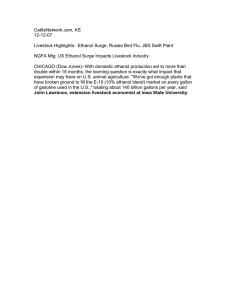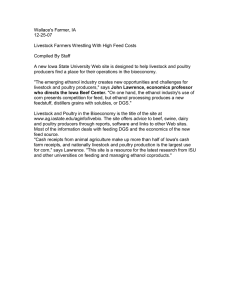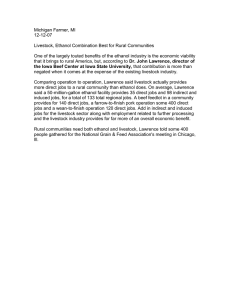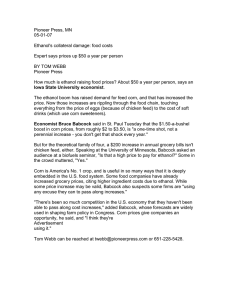Agri News, MN 02-27-07 Buhr sees challenging corn use picture
advertisement
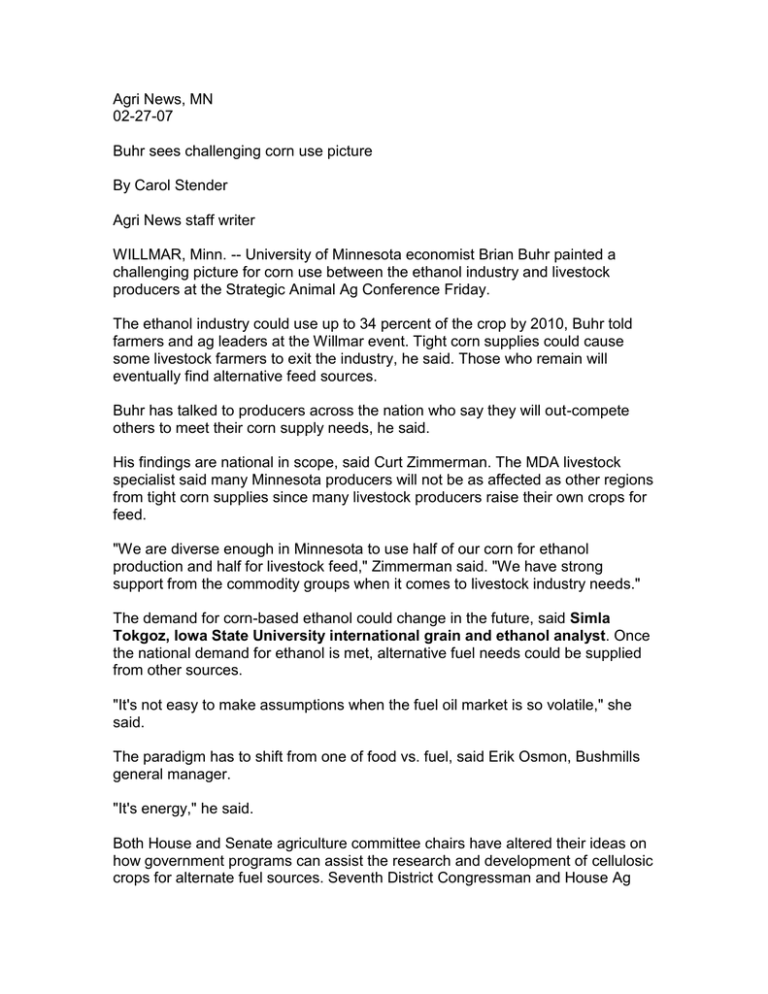
Agri News, MN 02-27-07 Buhr sees challenging corn use picture By Carol Stender Agri News staff writer WILLMAR, Minn. -- University of Minnesota economist Brian Buhr painted a challenging picture for corn use between the ethanol industry and livestock producers at the Strategic Animal Ag Conference Friday. The ethanol industry could use up to 34 percent of the crop by 2010, Buhr told farmers and ag leaders at the Willmar event. Tight corn supplies could cause some livestock farmers to exit the industry, he said. Those who remain will eventually find alternative feed sources. Buhr has talked to producers across the nation who say they will out-compete others to meet their corn supply needs, he said. His findings are national in scope, said Curt Zimmerman. The MDA livestock specialist said many Minnesota producers will not be as affected as other regions from tight corn supplies since many livestock producers raise their own crops for feed. "We are diverse enough in Minnesota to use half of our corn for ethanol production and half for livestock feed," Zimmerman said. "We have strong support from the commodity groups when it comes to livestock industry needs." The demand for corn-based ethanol could change in the future, said Simla Tokgoz, Iowa State University international grain and ethanol analyst. Once the national demand for ethanol is met, alternative fuel needs could be supplied from other sources. "It's not easy to make assumptions when the fuel oil market is so volatile," she said. The paradigm has to shift from one of food vs. fuel, said Erik Osmon, Bushmills general manager. "It's energy," he said. Both House and Senate agriculture committee chairs have altered their ideas on how government programs can assist the research and development of cellulosic crops for alternate fuel sources. Seventh District Congressman and House Ag Committee chairman Collin Peterson once wanted switchgrass and other cellulosic crops raised on CRP, said Tom Meium, Peterson's ag specialist. Iowa Senator and Senate agriculture chairman Tom Harkin had similar thoughts using the CSP. Legitimate questions were raised concerning how the crop would be grown and harvested, Meium said. People questioned what would happen to nesting birds during that time. "The importance of research can't be over-estimated," he said. There were no easy answers to questions on renewable fuel development and how it will affect crop availability for livestock feed. The conference was invaluable to get information to producers and ag leaders and prompt discussion, Zimmerman said. Livestock siting, ag and urban development and federal and state ag policy were other issues discussed at the conference.
